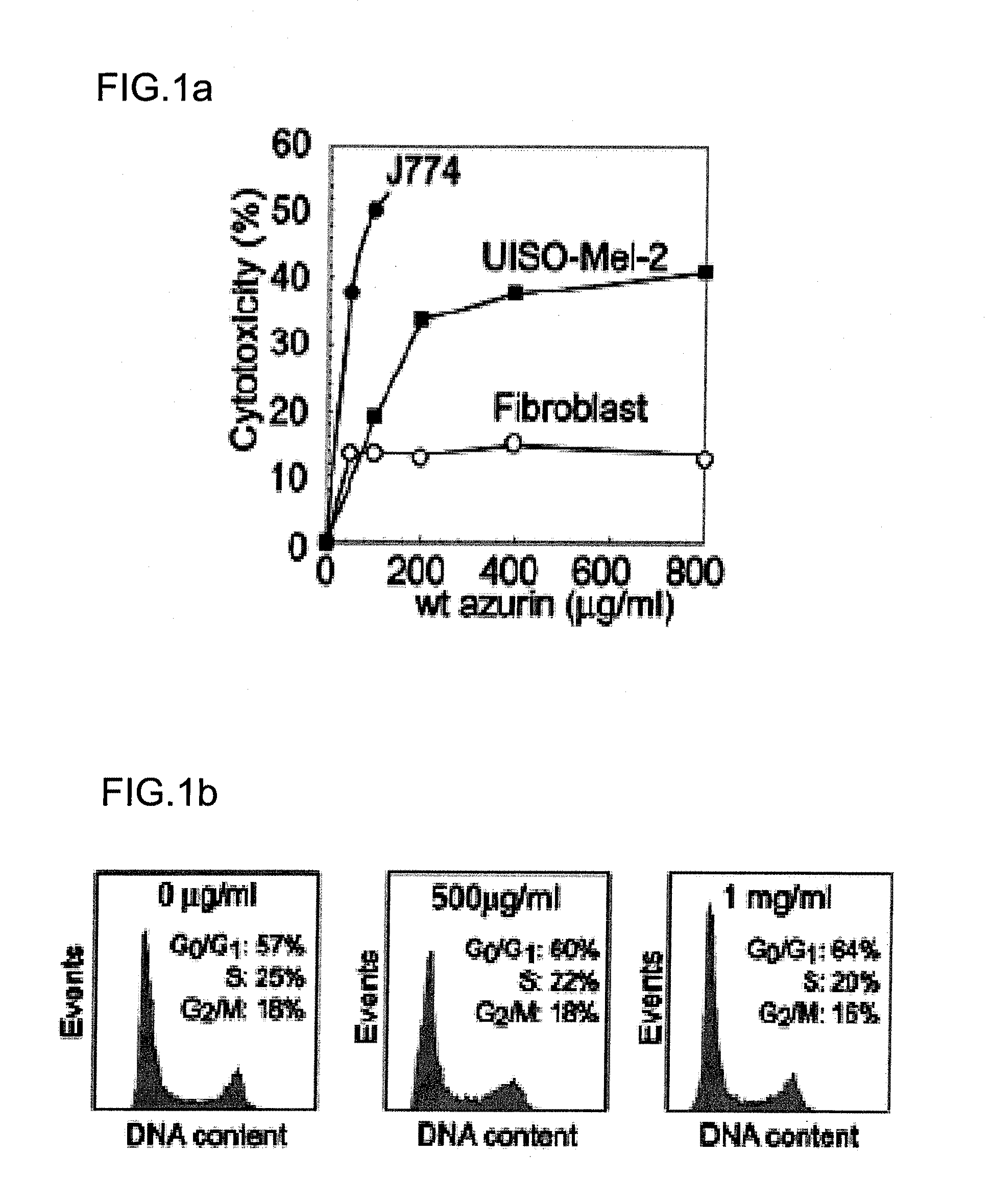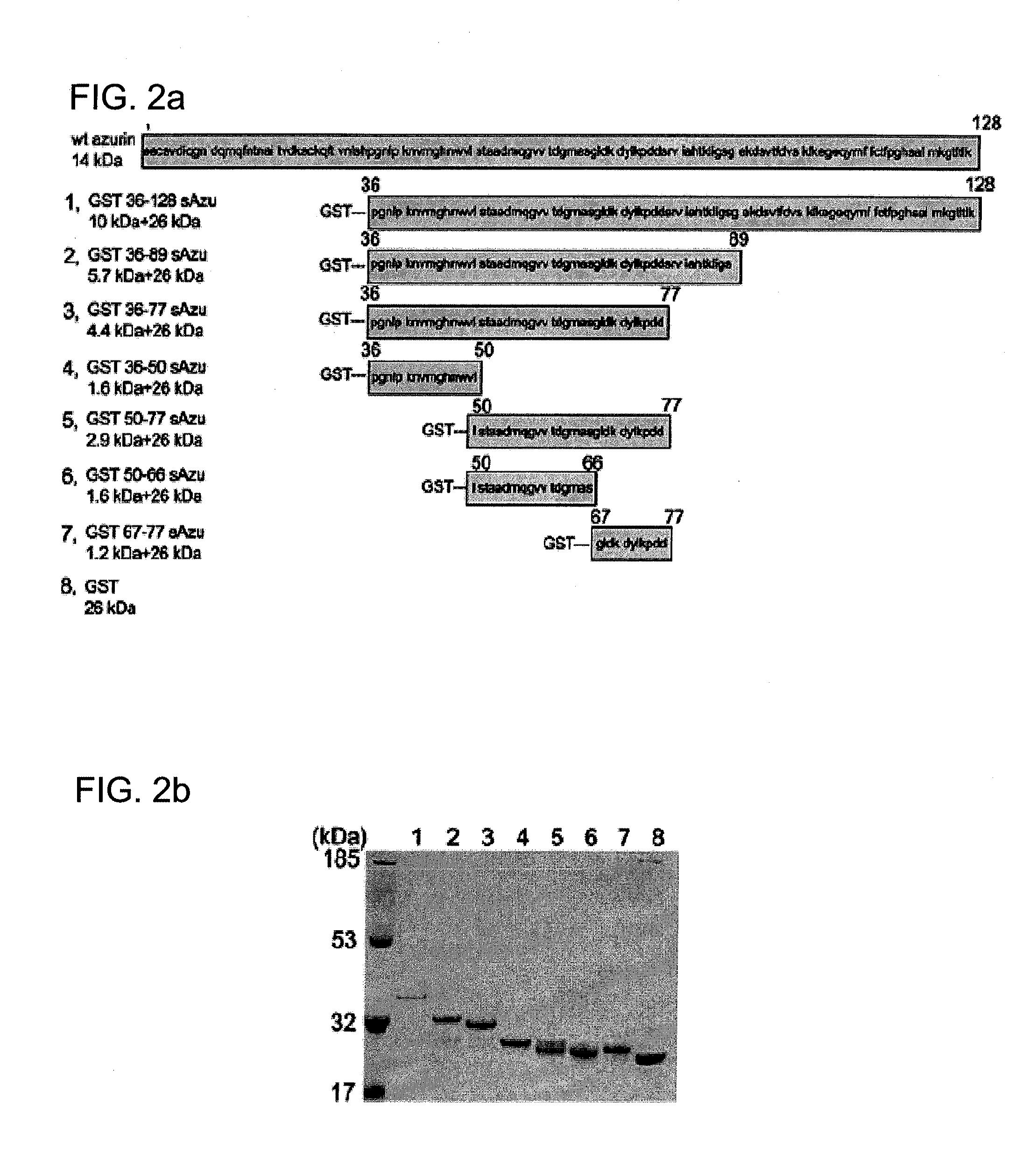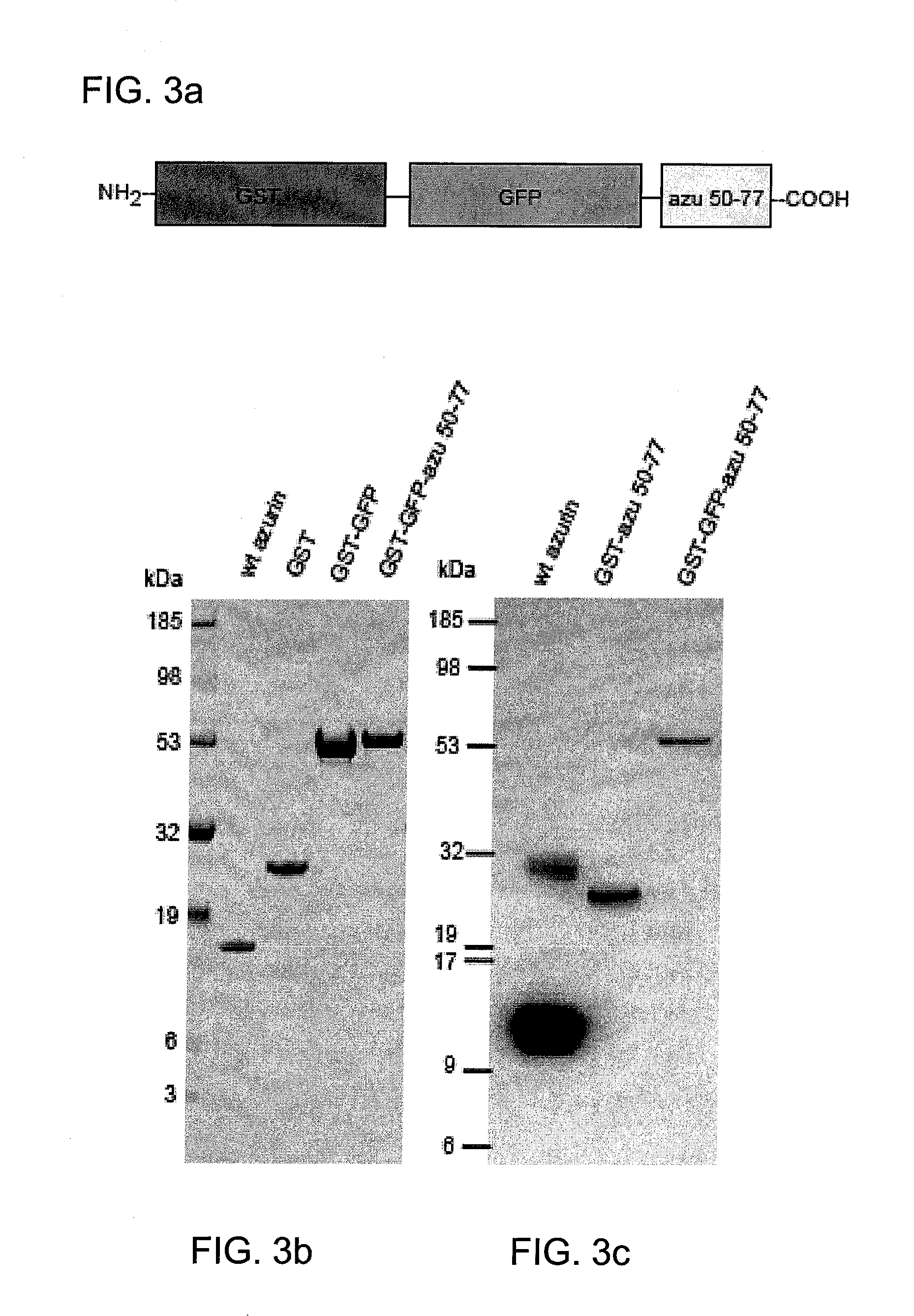Cupredoxin derived transport agents and methods of use thereof
a technology of transport agent and cupredoxin, which is applied in the direction of echographic/ultrasound-imaging preparations, peptide/protein ingredients, depsipeptides, etc., can solve the problems that bacterial proteins, or ptds derived from them, have limited the use of bacterial proteins for transporting pharmacologically, and achieve the effect of facilitating the entry of a linked cargo molecul
- Summary
- Abstract
- Description
- Claims
- Application Information
AI Technical Summary
Benefits of technology
Problems solved by technology
Method used
Image
Examples
example 1
Plasmid Constructions
[0150]Plasmids expressing fusion glutathione S-transferase (GST)-truncated wt-azurin (azu) derivatives were constructed by a polymerase chain reaction using proofreading DNA polymerase. FIG. 6 shows a schematic representation of various truncated wt-azurin constructs. For pGST-azu 36-128, an amplified PCR fragment was introduced into the BamHI and EcoRI sites of the commercial GST expression vector pGEXSX (Amersham Biosciences, Piscataway, N.J. 08855). The fragment was amplified with pUC19-azu as a template and primers, 5′-CGGGATCC CCG GCA ACC TGC CGA AGA ACG TCA TGG GC-3′(SEQ ID NO: 12) and 5′-CGGAATTC GCA TCA CTT CAG GGT CAG GG-3′ (SEQ ID NO: 13), where the additionally introduced BamHl and EcoRI sites are underlined respectively. Carboxyl-terminus truncation of azu gene was cumulatively performed by introducing a stop codon using QuickChange site-direct mutagenesis kit (Stratagene, La Jolla, Calif. 92037).
[0151]For pGST-azu 36-50, pGST-azu 36-77 and pGST-azu ...
example 2
Purification of Proteins
[0154]Wt-azurin and M44KM64E mutant azurin were prepared and purified as described by Yamada, T. et al. Proc. Natl. Acad. Sci. USA, vol. 101, pp. 4770-75 (2004), and in copending U.S. patent application Ser. No. 10 / 720,603, the contents of which are incorporated by this reference. Briefly, the wt-azurin gene was amplified by PCR according to the method described by Kukimoto et al., FEBS Lett, vol. 394, pp 87-90 (1996). PCR was performed using genomic DNA from P. aeruginosa strain PAOl as a template DNA.
[0155]The amplified DNA fragment of 545 bp, digested with HindIII and PstI, was inserted into the corresponding sites of pUC19 so that the azurin gene was placed downstream of the lac promoter to yield an expression plasmid pUC19-azuA. E. col JM109 was used as a host strain for expression of the azurin gene. The recombinant E. coil strain was cultivated in 2YT medium containing 50 μg ml−1 ampicillin, 0.1 mM IPTG; and 0.5 mM CuSO4 for 16 h at 37° C. to produce a...
example 3
Cell Cultures
[0160]J774 and UISO-Mel-2 cells (available from Frederick Cancer Research and Development Center, Frederick, Md. U.S.A.) were cultured as described in Yamada, T. et al. Infect. Immun. vol. 70, pp. 7054-62 (2002); Goto, M., et al. Mol. Microbiol. vol. 47, pp. 549-59 (2003); and Yamada, T., et al. Proc. Natl. Acad. Sci. USA vol. 99, pp. 14098-103 (2002), the contents of which are incorporated by reference. Human normal fibroblast cells (stock culture collection of the Department of Surgical Oncology, University of Illinois at Chicago (UIC), Chicago) were cultured in MEM with Eagle's salt containing 2 mM L-glutamine, 0.1 mM MEM essential amino acids and supplemented with 10% heat inactivated fetal bovine serum, 100 Units / ml penicillin and 100 μg / ml streptomycin. MCF-7 and MOF-10F cells were cultured as described in Punj et al. Oncogene 23:2367-78 (2004).
PUM
 Login to View More
Login to View More Abstract
Description
Claims
Application Information
 Login to View More
Login to View More - R&D
- Intellectual Property
- Life Sciences
- Materials
- Tech Scout
- Unparalleled Data Quality
- Higher Quality Content
- 60% Fewer Hallucinations
Browse by: Latest US Patents, China's latest patents, Technical Efficacy Thesaurus, Application Domain, Technology Topic, Popular Technical Reports.
© 2025 PatSnap. All rights reserved.Legal|Privacy policy|Modern Slavery Act Transparency Statement|Sitemap|About US| Contact US: help@patsnap.com



